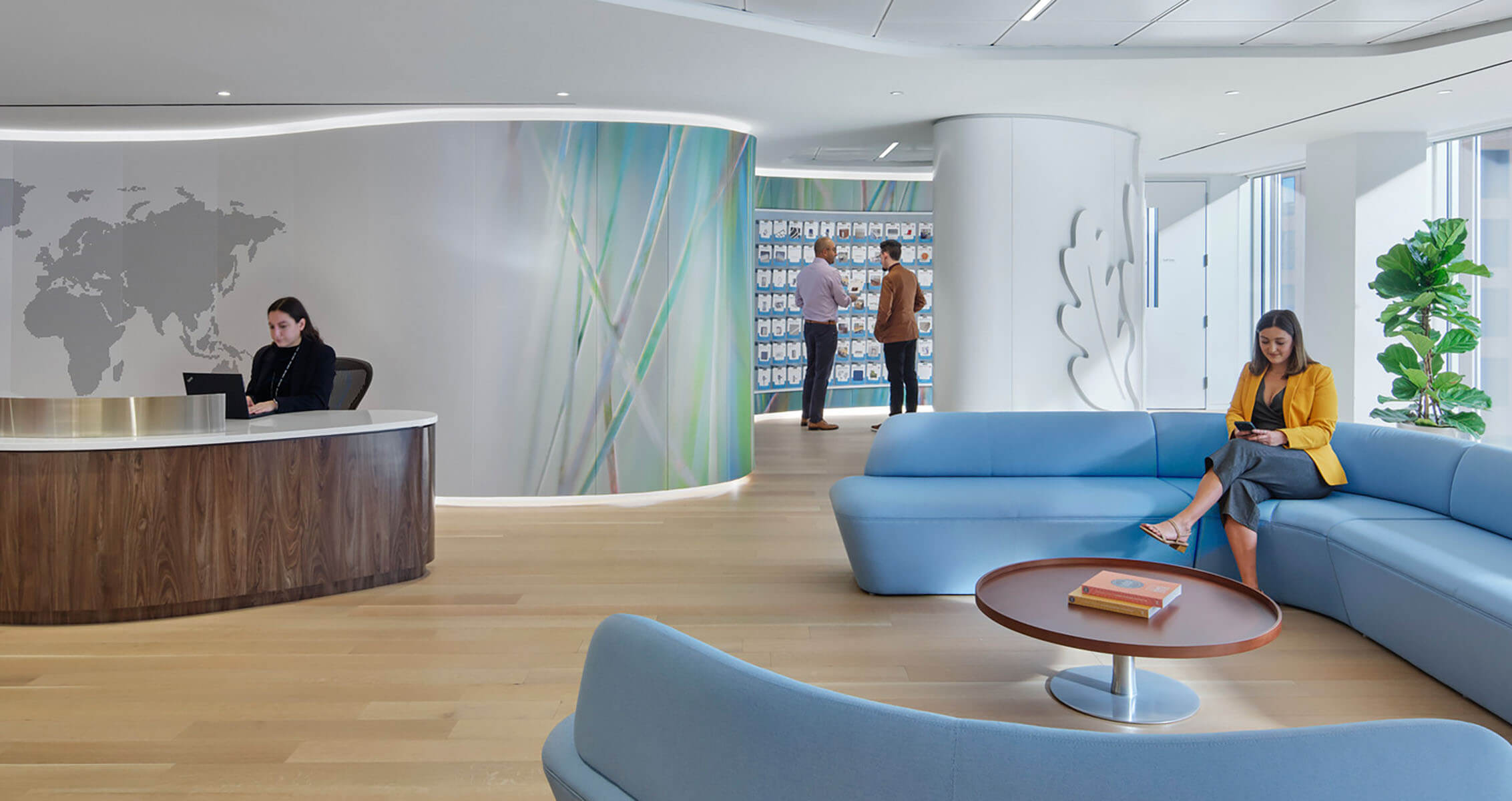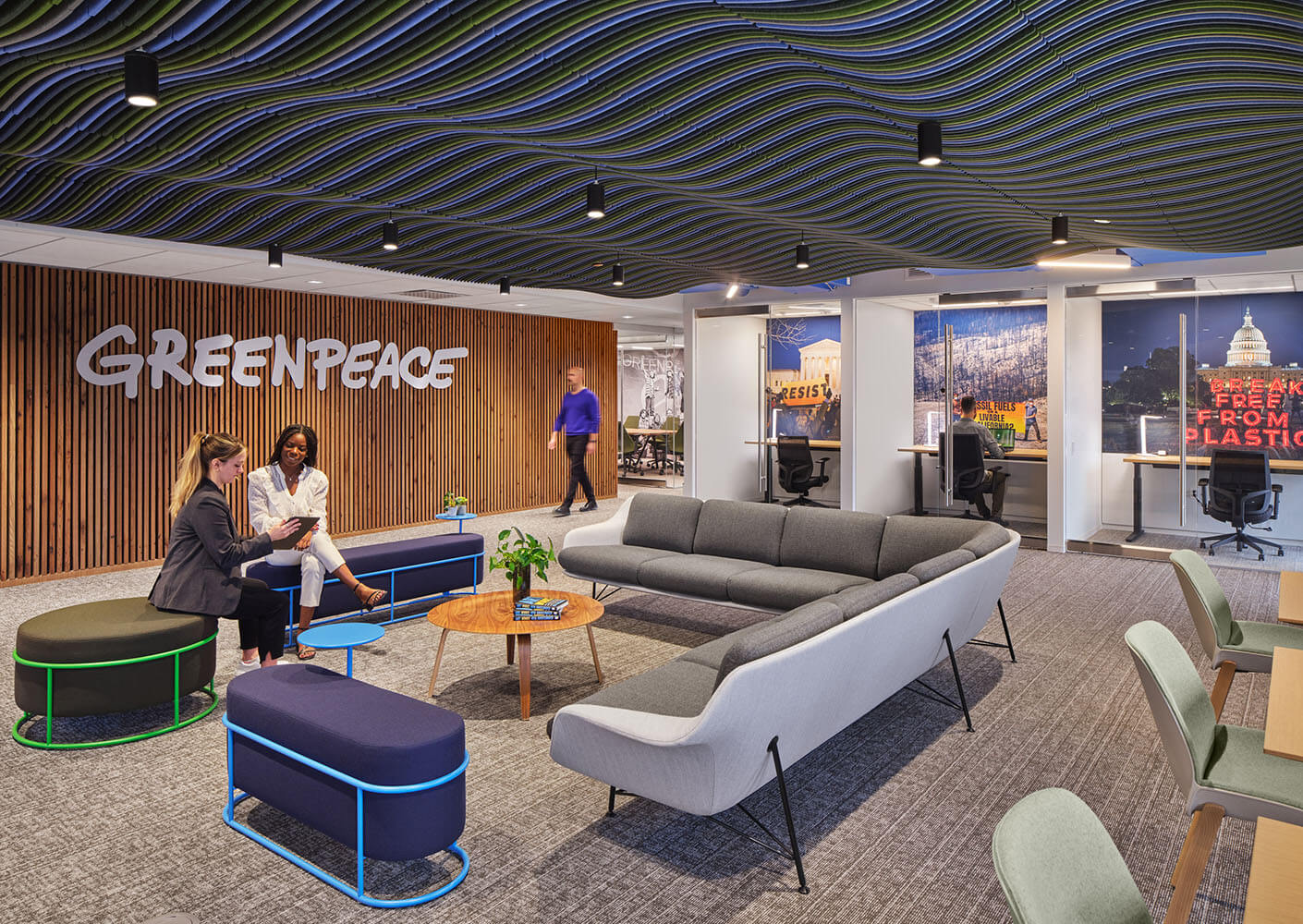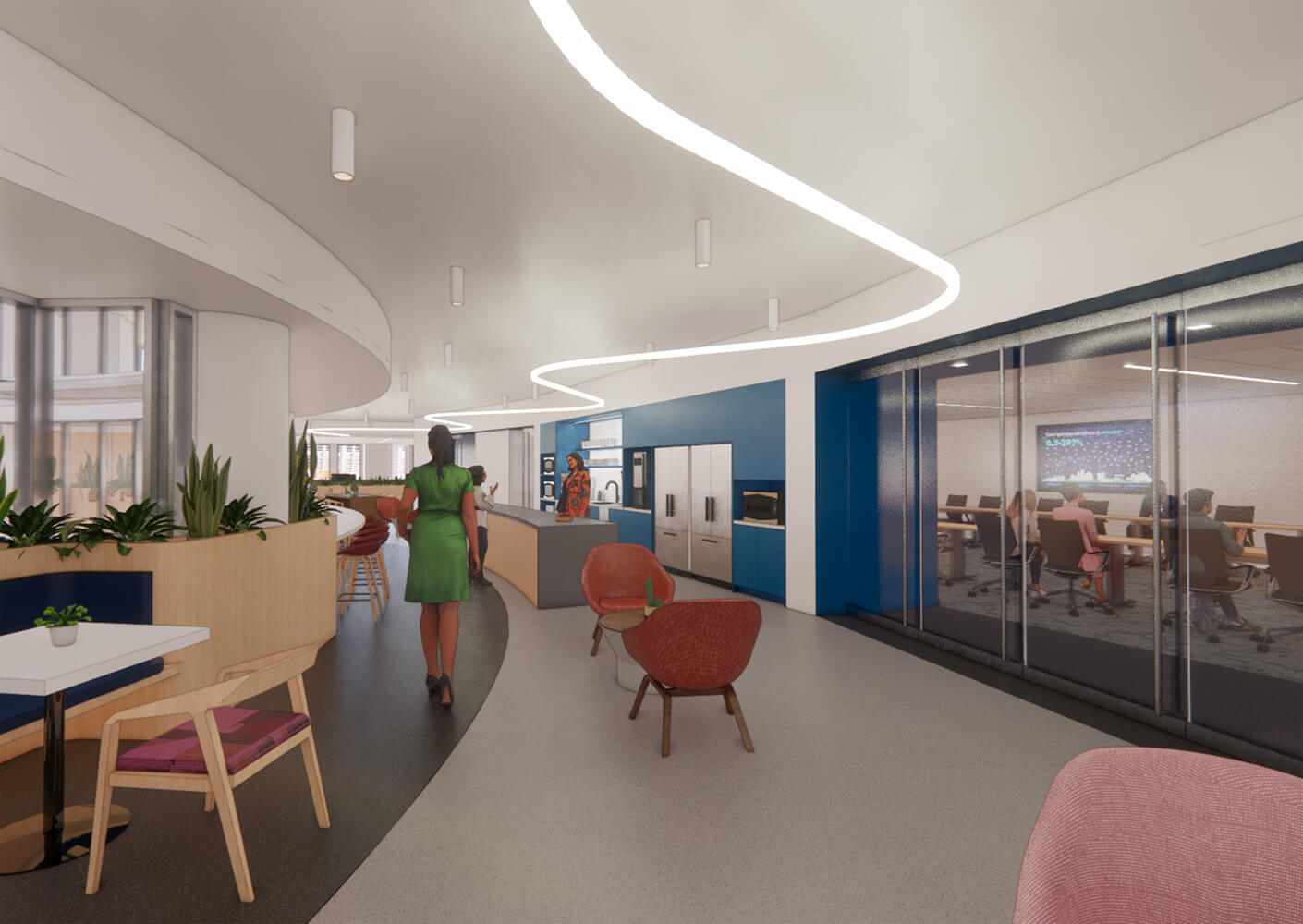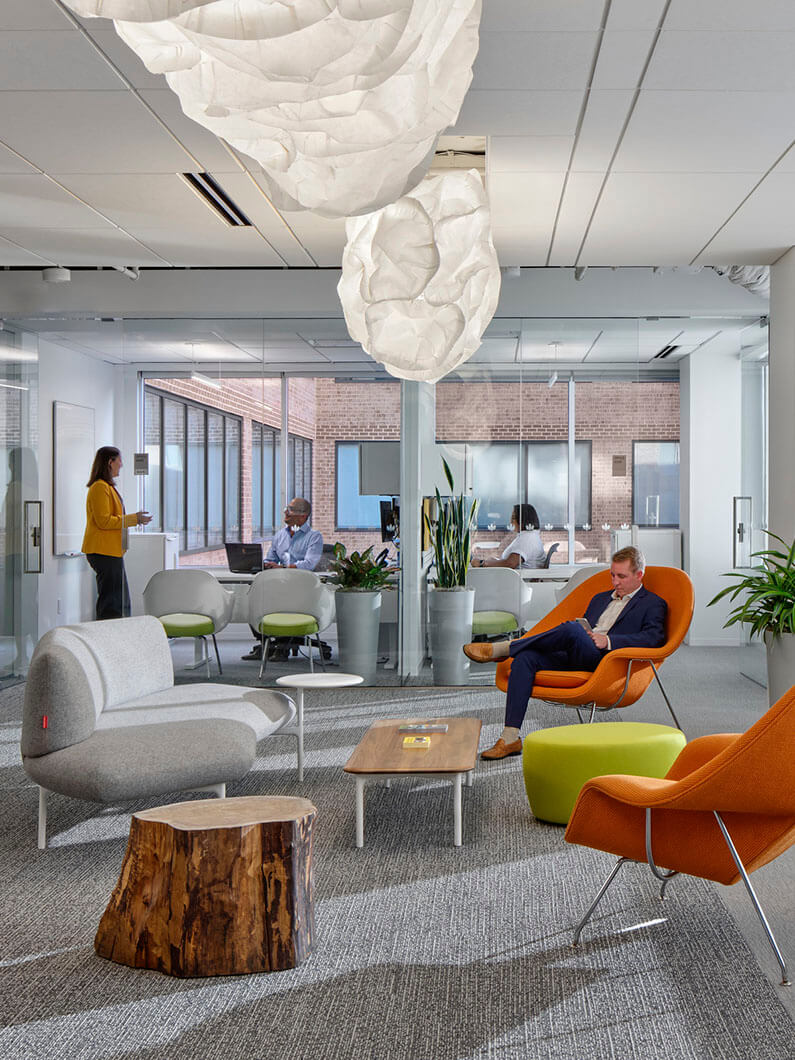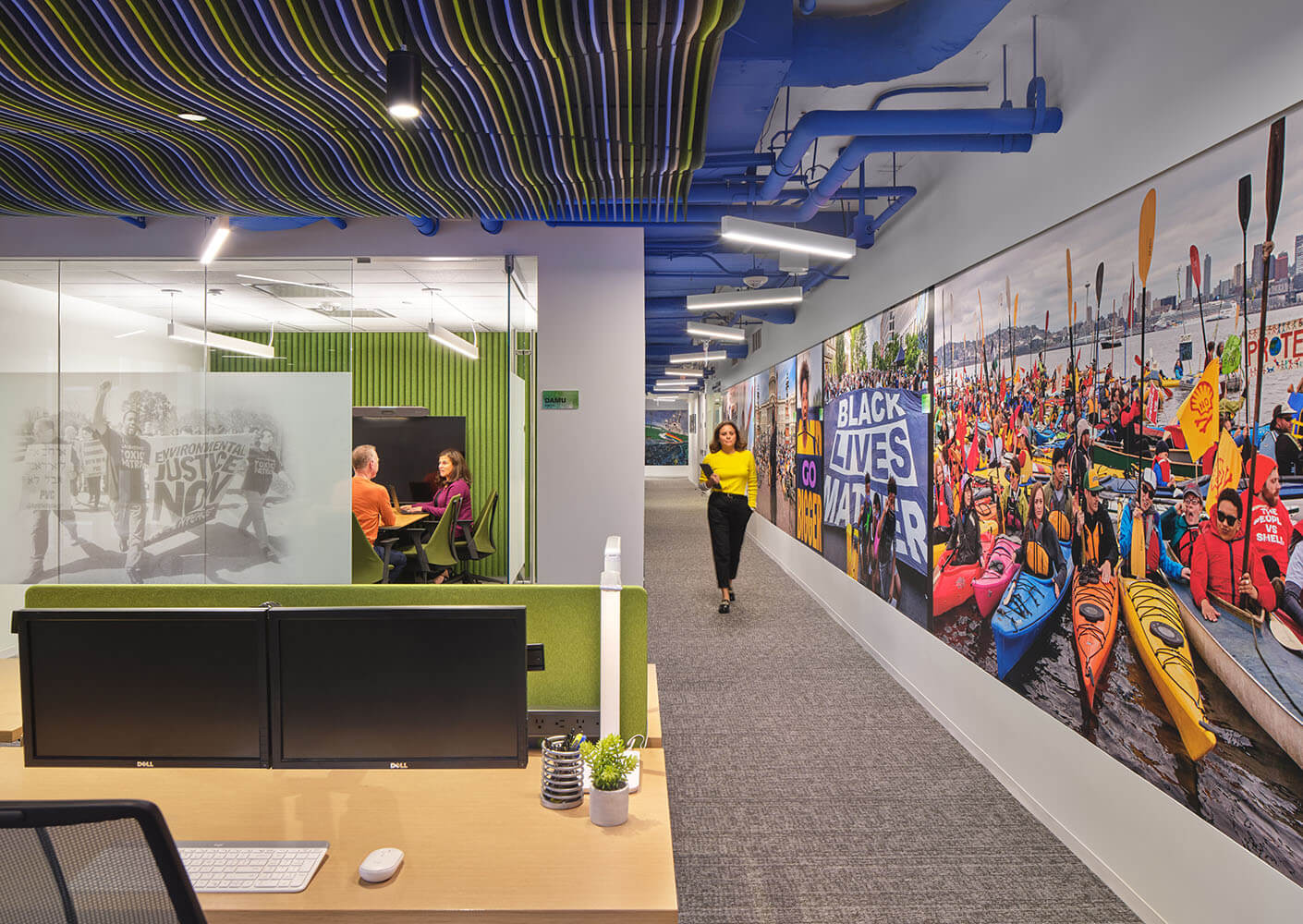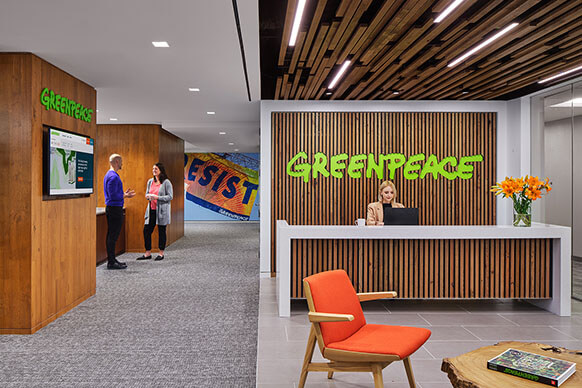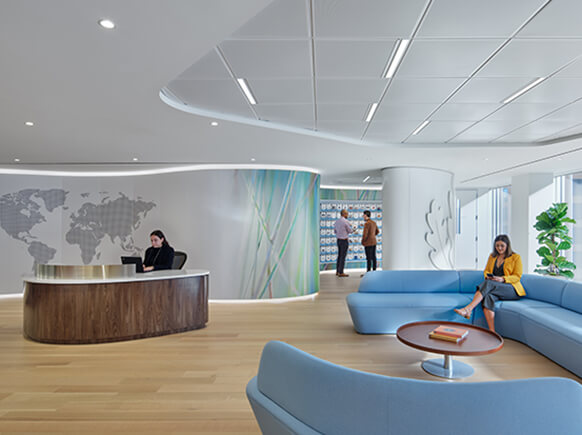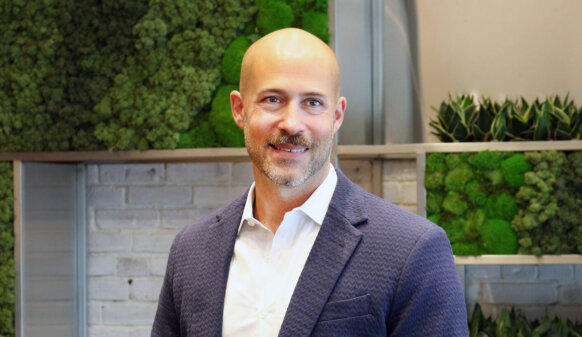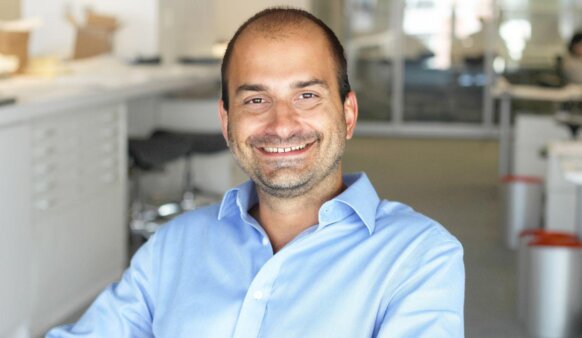As a result, Greenpeace was able to reuse 90% of existing divisible conference rooms, including glass partitions, doors, hardware, wood paneling, millwork credenzas, ceiling systems, lighting, operable partitions, mechanical, and AV systems. Elsewhere on the project, 45% of ceiling tiles and 60% of metal studs were salvaged and reused.
Design charrettes with construction partners focused on disassembly-friendly detailing, favoring mechanical fasteners over glues and adhesives for drywall, ceilings, and millwork, promoting future reuse. Through circularity, the project reduced landfill waste and achieved an impressive 54% reduction in embodied carbon compared to the baseline of a new interior fit-out, the equivalent of eliminating emissions from 64,409 pounds of coal.
3. Designing to Reduce Consumption
The EDF’s expertise in science and economics enables them to provide bold strategies for curbing climate change and reducing greenhouse gas emissions, and their new office embodies this focus by reducing operational consumption through optimized building performance. The project is currently tracking LEED ID+C (Interior Design and Construction) Gold Certification.
Perkins&Will was asked to create an engaging and memorable experience through design that supported the organization’s mission. Lighting became an important part of achieving these goals. The design focused on reducing Lighting Power Density (LPD) to lower overall energy consumption, while innovating by prioritizing fixture specifications with third-party ingredient declarations such as DECLARE labels, Health Product Declarations or Cradle to Cradle certification. The final design reduced Lighting Power Density by 25%.
A holistic design and construction strategy resulted in the diversion of 14 tons of construction waste from landfills, equal to the carbon reduction capacity of 48 acres of US Forest in one year. The project also substantially cut back water usage: potable water use was reduced by 41.43%, and which anticipates saving 231,512 gallons per year. Reductions in operational carbon directly correspond to savings in annual utilities costs, creating a positive incentive for companies to invest in design that reduces consumption
